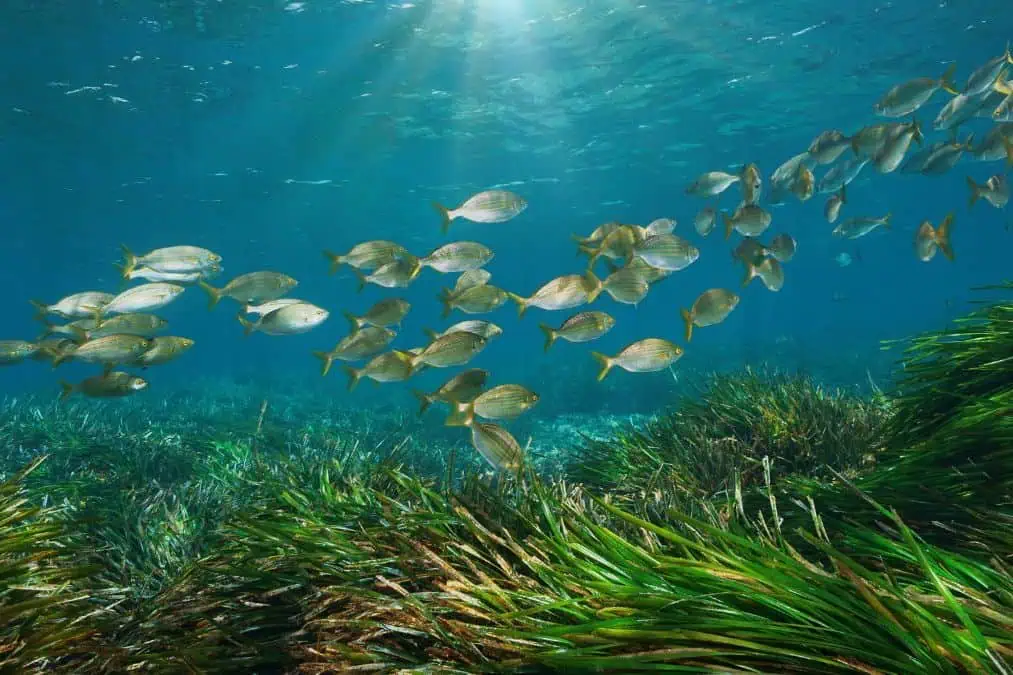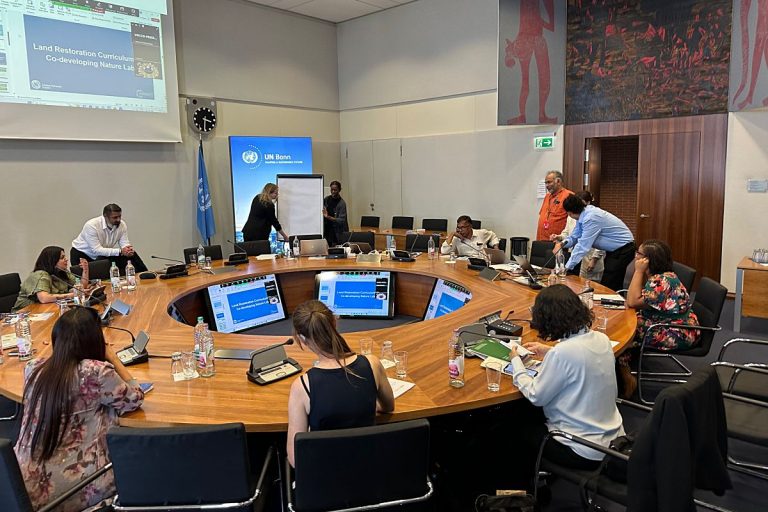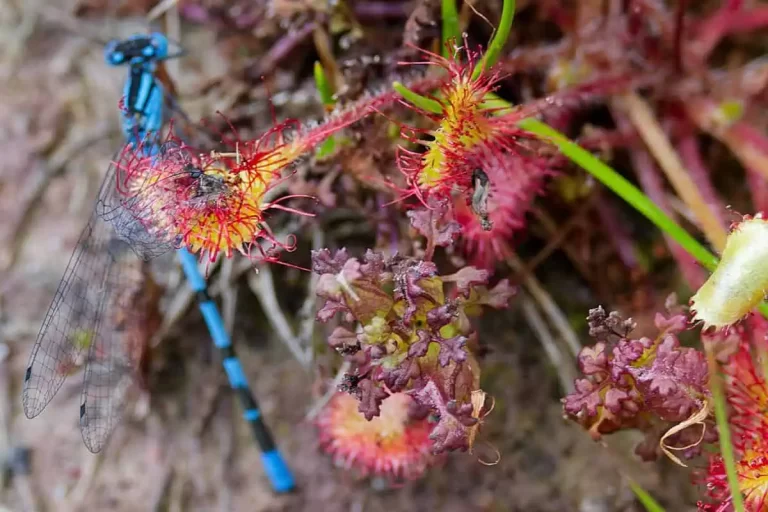10 Rules for Seagrass Restoration
Restoring the Underwater Meadows: 10 Essential Rules for Seagrass Restoration
Seagrasses, often referred to as the “lungs of the sea,” are vital to marine ecosystems. They provide habitat for countless marine species, store significant amounts of carbon, and help stabilize the seabed. However, these underwater meadows are declining globally due to human activities, prompting urgent efforts to restore them. Scientists from Project Seagrass and Swansea University have outlined ten rules for effective seagrass restoration. Each rule plays a crucial role in ensuring the success of these initiatives, offering a strategic framework for restoring these invaluable ecosystems.
1. Protect Existing Seagrass First
Given the increasing interest in seagrass restoration, the authors emphasize that it is significantly more challenging, time-consuming, and costly to re-establish seagrass meadows than to protect those already existing. Protecting these meadows from local stressors, such as improving water quality, reducing boating damage, establishing Marine Protected Areas, and promoting sustainable livelihoods, is essential. The authors also highlight the importance of prioritizing which seagrass meadows to protect, considering future climate changes, such as temperature shifts, sea-level rise, and changes in land use.
2. Work Together
The restoration of seagrass meadows is a collaborative effort that requires the involvement of diverse stakeholders, expertise, and experiences at every stage of the process. Seagrass ecosystems support various uses and livelihoods, from fishing to recreation, and maintaining equality and rights is crucial. Engaging local communities and stakeholders during site selection is essential, as they often become the long-term stewards of the restoration sites. Without collaboration, large-scale seagrass restoration is unachievable, and co-designing projects with communities enhances the social value of restored habitats.
3. Create Biodiverse Ecosystems with Multiple Functions for People and Planet
The primary goal of seagrass restoration is to maximize the biomass and biodiversity of meadows, ensuring they support diverse and resilient ecosystem functions and services. Natural systems provide multiple interconnected services, and focusing narrowly on a few can lead to unfavorable shifts and stakeholder conflicts. For example, the unregulated conservation of seagrass-associated green turtles may harm seagrass, affecting fisheries and other services. The complexity of seagrass ecosystems means that restoration should consider multiple services rather than focusing on a few in isolation.
4. Select Appropriate Sites for Restoration
A thorough site selection process is critical for successful seagrass restoration. Objectives should include restoration needs, habitat area, intended benefits, and beneficiaries. Habitat suitability modeling can help identify potential sites, but environmental factors like sediment movement, hydrodynamics, and light availability, as well as biological factors such as the presence of bioturbators, algae, and grazers, must also be considered. Social attitudes, opportunities, and costs are equally important when selecting restoration sites, as seagrass restoration is not just a biological process but a socio-ecological one.
5. Determine Appropriate Restoration Methods
While there is guidance on seagrass planting techniques, a universal set of guidelines for restoration success is still lacking. Given the high costs and uncertainties of planting methods, indirect approaches that remove pressures and encourage natural recovery may often be more effective. For instance, replacing traditional boat moorings with environmentally friendly alternatives can reduce seabed damage and support seagrass recovery, as seen in the UK.
6. Use Resilient Plant Materials and Future-Proof Your Project
The long-term cost-effectiveness of planting new habitats for species that may soon disappear is a key consideration. Climate-driven range shifts for seagrass species are already occurring, with significant northward migrations projected in places like the US East Coast. Climate stressors affect seagrass differently at various life stages and times of the year, impacting seed viability and survival. Practitioners must integrate climate projections into restoration plans, adapting methods based on long-term forecasts, such as El Niño intensity and sea-level rise, to ensure future success.
7. Maximize the Potential Opportunity of the Restoration
Maximizing resources is crucial for successful seagrass restoration, focusing on enhancing ecological benefits. Seagrass meadows exist in various landscape patterns, with fragmented meadows being more vulnerable to environmental change than continuous ones. Restoration efforts that reconnect fragmented patches can boost coastal seascape resilience. Techniques like stimulating natural regeneration and modifying sediment conditions have shown success in places like the Florida Keys. Restoration should consider biodiversity at all levels, as it enhances system resilience. The concept of seascape-scale restoration emphasizes connectivity between habitats, which is vital for improving ecosystem function and resilience, particularly in temperate systems. Targeted research is needed to understand and enhance habitat connectivity, contributing to more effective marine ecological restoration efforts.
8. Plan Ahead for Infrastructure, Capacity, and Restoration Material
Planning before starting restoration projects is essential to reduce risks. Decisions about sites and methods should be based on sound science, local data, and existing literature. Besides selecting the right biological conditions, ensuring the appropriate social governance structure is vital for community buy-in. Developing strong community relationships, as illustrated by projects in South West Wales, can determine the success or failure of restoration efforts. Flexible project management, risk assessment, and preparation for potential setbacks are crucial for long-term success.
9. Develop Realistic Informed Goals and Reporting
As global environmental policy increasingly embraces Nature-Based Solutions, clear communication about the effectiveness and uncertainties of seagrass restoration is more important than ever. The authors advocate for a “learn by doing” approach, where the wider restoration community can benefit from shared experiences and lessons learned from both successes and failures.
10. Make It Pay
Seagrass restoration is expensive and has primarily been funded by philanthropic and government sources. New financial mechanisms are needed to support seagrass protection and enhancement, which is crucial for successful restoration. While funding is easier to obtain for planting new areas, innovative financing solutions are necessary to sustain long-term restoration efforts, including monitoring, management, and stewardship to ensure success.
Wider Impact
Restoring seagrass meadows is an intricate process that requires a strategic, well-informed approach. By following these ten golden rules, restoration projects can enhance their chances of success, ensuring that seagrass meadows continue to provide their vital ecological functions for generations to come. As we face growing environmental challenges, the restoration of seagrass meadows is needed to increase the resilience of our oceans.
Seagrass restoration is not just about planting underwater plants; it’s about restoring balance to our marine ecosystems and ensuring a healthier planet for future generations. Each of these rules provides a piece of the puzzle, collectively guiding us towards more effective and sustainable restoration efforts. Implementing the 10 Golden Rules for seagrass restoration can help shift the focus from merely planting to facilitating natural recovery and sustaining restoration over the long term.
For more information: Plants, People, Planet.









